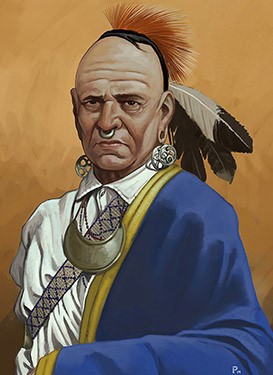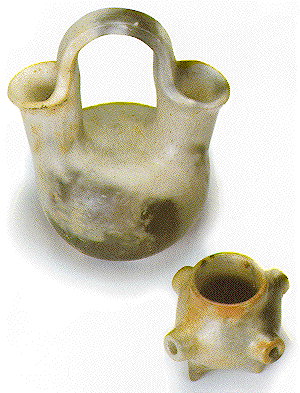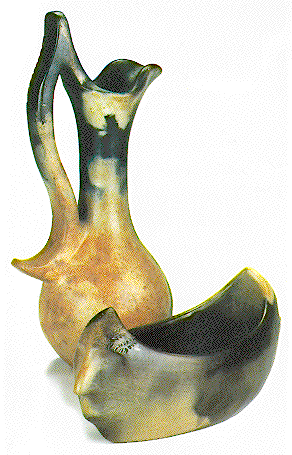In the News
 The Official Web Site of the State of South Carolina
The Official Web Site of the State of South Carolina
The Catawba Indians have lived on their ancestral lands along the banks of the Catawba River dating back at least 6000 years. Before contact with the Europeans, it is believed that the Nation inhabited most of the Piedmont area of South Carolina, North Carolina and parts of Virginia. Early colonial estimates of the Catawba population when settlers arrived are between 15,000-25,000.
Settlers began to move into Piedmont during the 18th century. The Nation always carried a philosophy of brotherly love and peace when it came to the settlers. This did not serve them well though because the settlers brought disease with them. In 1759, smallpox swept through the Catawba villages for a fourth time in a century bringing the population of the Nation to less than 1,000 by 1760. Colonists believed the Nation was dying out.
The Catawba have long understood the need to work together and adapt to our ever-changing circumstances. No one knew this better than King Hagler who led the tribe from 1754-1763. He adopted the title of King because the settlers coming into Catawba territory at the time were led by a king.
King Hagler (1754-1763) was a powerful ally to the English and was well respected among the Piedmont tribes. He led the Catawba people to side with the English in the French and Indian War. He also protected the local settlers against Cherokee invaders. He firmly believed in the treaties that were created to protect his people, and when traveling to negotiate the documents, he took the principal Warriors with him. Even though King Hagler wanted to preserve the lands of the Catawba, he also understood that survival depended on working together.

That heritage has been passed on through many generations since King Hagler. We fought along the side of the Patriots when the settlers decided they wanted to be free from England, one of only three tribes to do so. George Washington’s journals mention the fierceness of the Catawba Warriors many times and how valuable they were to the effort.
When other tribes were being moved west on the Trail of Tears, the state of South Carolina decided not to spend the money because the tribe membership was so low in numbers at the time that it was expected the Catawba would be extinct soon. That warrior spirit and resiliency of the Catawba have helped us through many hard times.
After our federal status was removed in 1951, we reorganized and fought to regain that status. And though it took over 20 years to accomplish this, we achieved it in 1993. That same heritage is within the tribe now. We are warriors and are a strong, resilient people, who know that working together will move us farther down the path we want to go.
Catawba Indians are aboriginal to the Carolinas and the Catawba pottery tradition has survived for over 4,000 years, long before the craft made its debut in the Southwest. The tradition has been passed down within the Nation and has survived contact with Europeans, wars, centuries of economic and cultural stresses, and the introduction of modern technology such as the potter's wheel. In spite of these outside influences, the Catawba pottery tradition has remained one of the oldest and purest art forms of its kind. There has never been a period in time when this tradition ceased to exist.
When settlers came through to trade with the Catawbas they would buy crafts such as leather moccasins and baskets, but pottery was by far the most popular item. Some settlers became so fond of the pottery that they would only cook certain dishes in a Catawba pot. Eventually, the pottery became so popular that groups of Catawba women would travel to settlements to sell their crafts.
The Catawba people have specific methods they follow to create their pottery. From finding the clay, building the pieces, and burning the pottery they have remained close to the traditional ways with few exceptions being made for technological advances that improve their pottery. Clay for traditional Catawba pottery is dug from clay holes along the banks of the Catawba river. Many of the same clay holes that were used hundreds of years ago are still used today. After the clay is hand processed it is then ready for creating pottery. Catawba pottery is formed completely by hand using several different methods depending on the size of the piece. After the piece is finished, it is left to dry for several days. After it is dry then the potter will begin the detail work by rubbing and scrapping the piece by hand. They use many different tools to do this work from sea shells, smooth rocks from the river, and old snuff cans. Many potters pass their pottery creating tools down to their children and grandchildren. Burnishing or "rubbing" the pots can be a long and tedious process. After the potter is happy with the piece, then it will be fired in an open fire. The potter warms the piece by leaving it outside the fire and then slowly moves it closer and closer until it is put into the fire. The process of firing gives the pottery its distinctive look. The colors come from the clay along with the variety of wood used and the intensity of the fire.

There were several famous Catawba potters who were known for their art. Many of their pieces can be found in museums and in art collections. Even though societal changes led to a decline of pottery making, the tradition has been revived and is still passed down today. About 50 adult Catawbas make and sell pottery on a regular basis. Catawba children are being taught the craft in the children’s programs that are run by the Nation and there are also pottery classes for adults taught at the Cultural Center with hopes of keeping the tradition alive.
Due to the importance of pottery in the Catawba culture, the Nation is committed to making sure that there are always Catawba potters to teach this skill to others so that this 4,000-year-old tradition can continue to be passed on to future generations.



Of the 573 federally recognized tribes in the United States, the Catawba Indian Nation is the only one located in the state of South Carolina. The modern-day tribal lands are located in York County, South Carolina. There are currently over 3300 enrolled members of the Nation. The Nation has a long history and a rich culture that lives on today.
The Catawbas have many thriving programs provided for Nation citizens and the surrounding community. The administrative offices are located on the Reservation. This building houses the Executive Committee of the Nation as well as staff working in departments such as Accounting, Economic Development, Real Estate, Family Services, and Transportation. The administrative office has over 50 employees. The Nation also has a successful housing program, several child care facilities, a seniors program, Boys & Girls Clubs, and transit services. There is a clinic on the reservation that is run through Indian Health Services. The Nation has helped support many Nation citizens in their pursuit of an education through the Scholarship and Job Placement & Training programs. The Catawba Cultural Center provides a link to the rich culture of the Nation.

The Nation participates in several York County boards and committees including Economic Development, RFATS, and the Catawba Regional Council of Governments. Nation leaders are always looking for opportunities to contribute to the community through economic development, helping forward the goals of the county, and sharing the culture with others. The Catawbas have proven again and again that they will continue to thrive against all odds.
References:
Merrell, James. The Catawbas. New York: Chelsea House Publishers, 1989.
Hilton Pond Center. “The Catawba Indians: People of the River.” Hilton Pond Center for Piedmont Natural History. http://www.hiltonpond.org/CatawbaIndiansMain.html University of South Carolina Lancaster, “Native American Studies” USC Lancaster, http://usclancaster.sc.edu/NAS/ (accessed October 24, 2012).